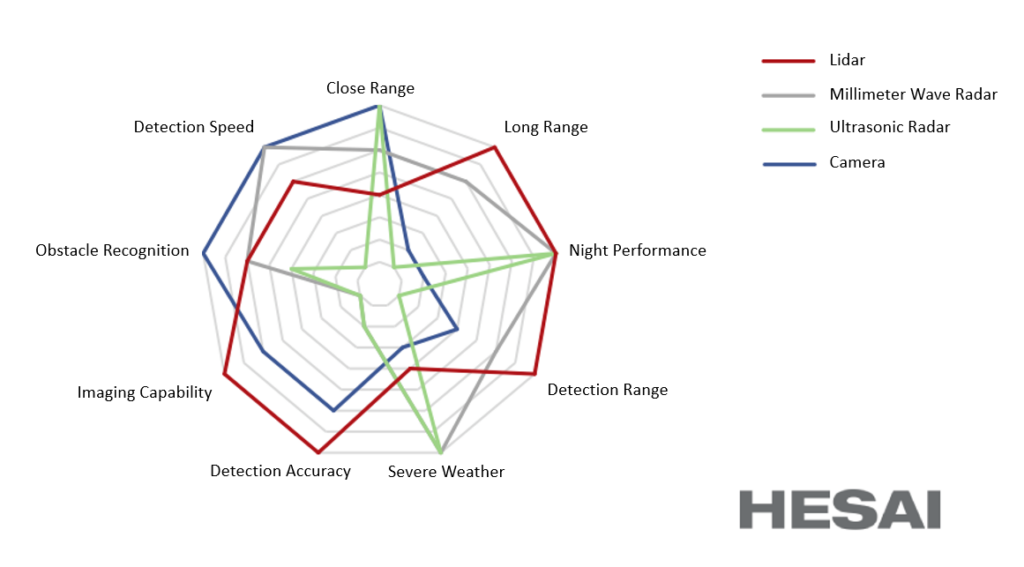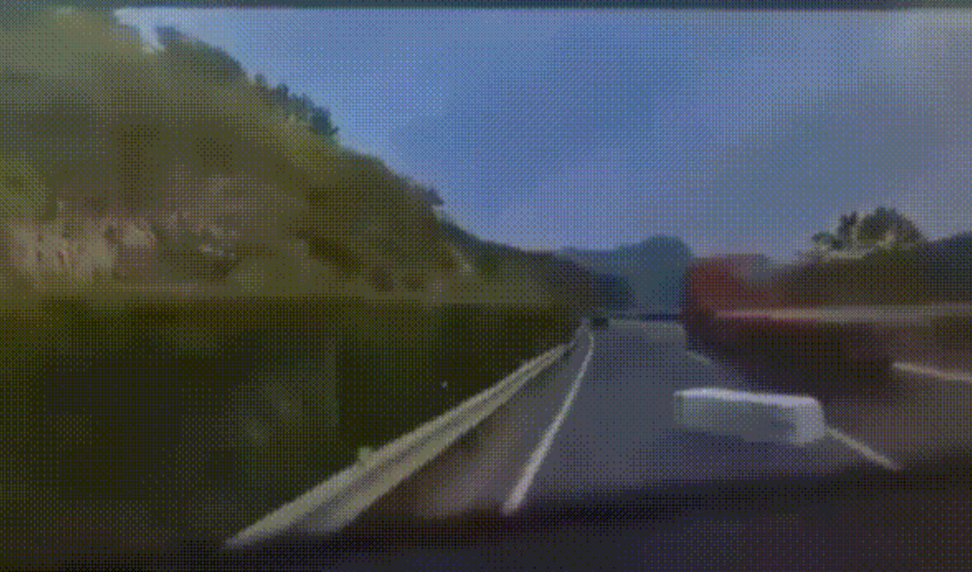Nowadays, lidar applications have become a big trend in the automotive industry. For example, the Li Auto L9, which delivered over 10,000 vehicles in September, is equipped with Hesai’s 128-channel high-performance lidar.
Some may wonder, if many smart cars already have cameras, millimeter-wave radar, ultrasonic radar, and other sensors. Why do they still need lidar? What exactly can lidar bring to smart vehicles?
The answer is simple, safety.
Brad Templeton, Google's self-driving project consultant, once made a famous statement: "cameras and millimeter-wave radars can guarantee 99% of the safety of autonomous driving systems, but 99% of the accuracy is not enough for vehicle driving, as that 1% may lead to tens of thousands of accidents. Therefore, we need lidar to improve the accuracy to 99.9999%".
The camera, millimeter-wave radar, and lidar have features as shown below. Still, it is evident that with lidar, the smart car is guaranteed higher security and redundancy, bringing a safer and smarter driving experience.

So, to be more specific, in which scenarios can lidar take more advantages?
Bright light or night scene
Since the camera passively acquires visible light, its perception performance is greatly affected by changes in outside light. When encountering bright light at the tunnel exit, the camera’s performance will be significantly affected, making it challenging to identify the road conditions, thus providing the smart car with limited perception information.

In addition, on a dark road, the camera can capture far fewer details than in the daytime. In such conditions, if pedestrians or vehicles appear, the camera may not be able to see them at a far distance, and it will be too late when they see them.

With lidar, these problems are gone. Lidar actively emits infrared light and will not be affected by changes in outside light or the color of objects. Even in bright light or darkness, it can "see clearly" and provide vehicles with rich three-dimensional environmental perception information to avoid accidents.
Identification of unusual objects
Cameras learn things like a human child. In other words, only when it has "learned" can it "recognize." Therefore, they are unlikely to recognize things that have not been "learned."
For example, when encountering a uniquely shaped vehicle on a highway, if the camera has not "learned" before, it will not be able to identify this vehicle through feature comparison, leading to wrong judgments and even accidents.

Lidar can locate objects' position and shape through powerful three-dimensional space perception and stably perform perception even when uniquely shaped vehicles or objects may be visually "integrated" with the surroundings.
Real use case
A Li Auto L9 owner posted an NOA braking case not long ago. The L9 equipped with lidar accurately recognized the static white box on the road then issued a warning to the vehicle in time and participated in braking. The speed decreased from 82.8km/h to 64.8 km/h, avoiding a collision accident.

Another Li Auto L9 owner shared a road video recorded on the highway. It can be seen that the NOA intelligent driving system of the Li Auto L9 accurately identified stationary vehicles on the highway and stopped in time to avoid rear-end collisions. The owner also commented, "with multi-car collisions both in front and at the back of my car, it's so lucky to be able to stop in time in the middle."
In a word, lidar helps bring a better and safer intelligent driving experience. Would you like your car to be 99.9999% safe?
Copyright © 2024 Hesai Group. All Rights Reserved.

